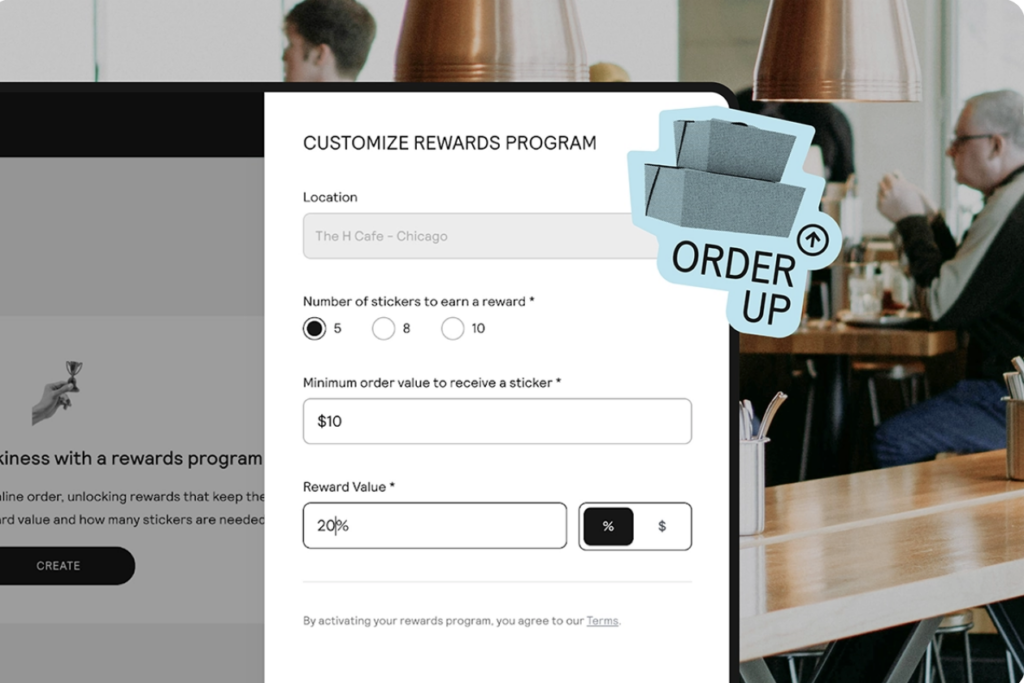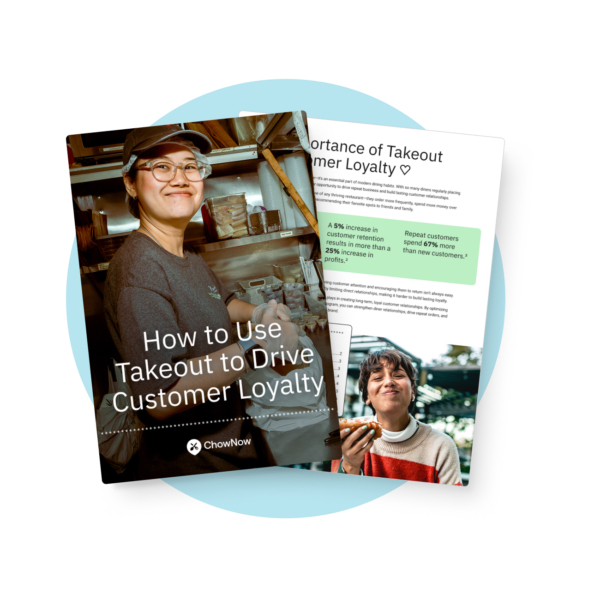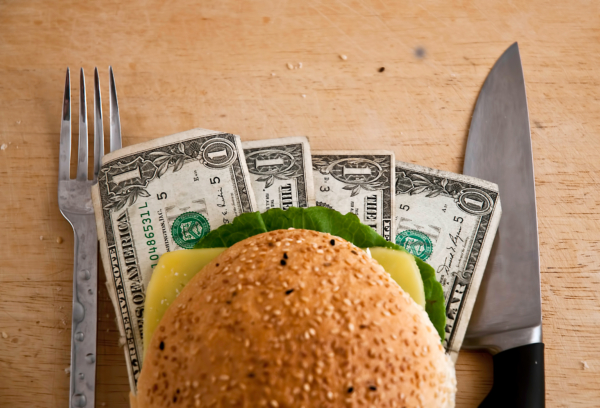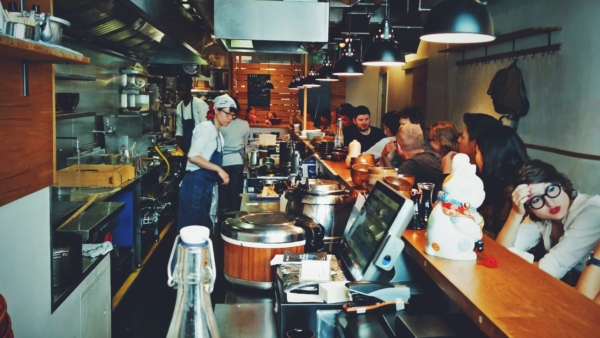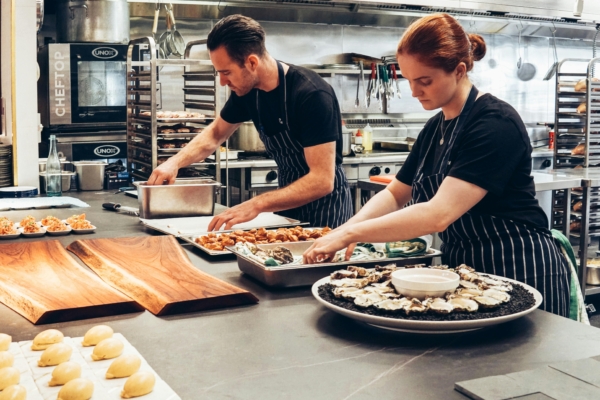Restaurant Customer Lifetime Value: How to Build Loyalty That Pays Off for Years

Growing your restaurant comes down to understanding two key numbers:
- Customer Acquisition Costs (CAC): how much you spend to attract a new customer
- Customer Lifetime Value (CLV): how much that guest is worth to your business over time
If you’ve already read our guide on Restaurant Customer Acquisition Cost, you know why CAC is essential for growing your customer base. But once you understand what it costs to bring in a new diner, you’re left with only half the picture.
To truly grow your business, you need to understand what it is that keeps your customers coming back—and spending more—with each visit.
In this article, we’re focusing on customer lifetime value and what it means for your restaurant, why it’s a better measure of long-term success than simple sales numbers, and how improving it can help create loyal customers who return again and again.
What Customer Lifetime Value Means For Restaurants
Customer Lifetime Value (CLV) tells you how much revenue a typical guest brings to your business over the entire customer lifespan, from their first order to their last.
To calculate restaurant customer lifetime value, you can start with a simple formula:

Customer Lifetime Value = Average Order Value × Purchase Frequency × Average Customer Lifespan
Here’s an example of what that looks like:
- If your average order value is $25
- And the average customer orders once a week (4 times per month)
- With an average customer lifespan of 2 years (24 months)
Then, based on these numbers, your restaurant’s CLV is:
$25 × 4 × 24 = $2,400
That means, on average, each customer brings in about $2,400 in total revenue over two years.
The more often a customer visits or the longer they stay loyal, the higher your customer lifetime value CLV will be. Even small improvements, like increasing the average purchase value or retaining customers for just a few extra months, can dramatically boost profitability.
Multiply that by dozens or hundreds of loyal customers, and you start to see why CLV is such a powerful measure of long-term growth.
How CLV compares to metrics like average check size or visit frequency
Many restaurants focus on average order value, average spend per guest, or transaction frequency—these are all useful restaurant KPIs, but they only tell part of the story.
Customer lifetime value (CLV) combines these numbers into one bigger picture that helps you understand your total revenue potential from every guest.
While average ticket size or visit frequency show what’s happening right now, CLV shows how well your customer relationships are performing over time. It reveals whether your customer engagement and retention efforts are paying off—or if you’re constantly stuck chasing new customers.
Why it’s a better measure of long-term success
Focusing on customer lifetime value helps you make data-driven decisions about where to invest your time, staff training, and marketing efforts.
A higher customer lifetime value means guests are returning more often, spending more per visit, and sticking with your restaurant longer—all signs of a healthy, loyal customer base.
For restaurant operators, CLV paints a clearer picture of long-term health than short-term sales or marketing campaigns. When your restaurant customers return regularly, your acquisition costs go down, your customer retention improves, and your growth becomes sustainable rather than seasonal.
Why CLV Matters More Than Transactions

When your restaurant is busy, it’s easy to focus on the day’s sales or this week’s average order value because it signals success in the moment, but long-term success isn’t built on one visit—it’s built on relationships.
By focusing on restaurant customer lifetime value (CLV), you can quantify the real impact of customer loyalty over time.
Repeat customers drive more profit than one-time guests
Your repeat customers are your most valuable guests..
In fact, repeat customers spend 67% more than new customers, making them a far more profitable segment of your customer base. They already trust your food and service—so they’re more likely to try specials, recommend your restaurant, and bring friends.

If a guest visits once a week for six months, their customer lifetime value far exceeds that of a new customer who comes in just once. That ongoing relationship is what turns predictable sales into a reliable revenue stream.
Retention is cheaper than acquisition
Every restaurant spends money to attract new diners through ads, discounts, or marketing campaigns, but customer acquisition can be expensive. Increasing your customer retention rate even slightly can dramatically boost profits, because it costs far less to retain customers than to win over new ones.
By focusing on customer loyalty and satisfaction, you reduce your acquisition costs while increasing the total value of every guest who walks through your door. It’s the classic “work smarter, not harder” equation that keeps your restaurant profitable.
CLV guides smarter decisions on marketing, menu, and promotions

Knowing your restaurant’s CLV helps you make better strategic choices.
When you understand how much a customer brings in over their average customer lifespan, you can allocate your marketing budget more effectively—targeting the guests who deliver the highest return.
You can also identify your high-value customers and design offers, events, or loyalty programs that keep them coming back. CLV data can guide strategic plans, from adjusting your menu items to launching marketing initiatives that drive repeat business instead of one-off visits.
Put simply: when you use customer lifetime value as your north star, every decision, whether it’s about staffing, pricing, or marketing, becomes more intentional and more profitable.
How To Improve Customer Lifetime Value
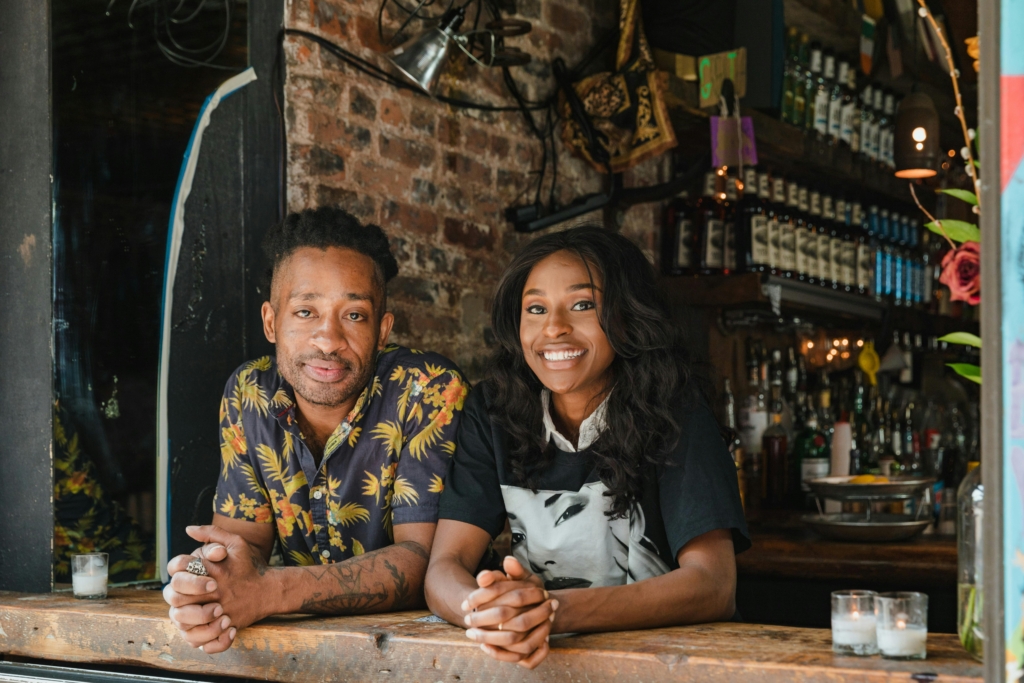
Once you understand what customer lifetime value is, the next question is obvious: how do you make it go up?
Steps to improving your restaurant customer lifetime value don’t require expensive software and complicated analytics—it’s about sharpening the fundamentals of hospitality and creating reasons for guests to keep coming back, spending more, and feeling connected to your restaurant.
The most successful operators focus on four simple areas:
- The customer experience
- A simple but powerful menu
- Staff training
- Digital tools that build customer loyalty
Let’s break down each of these to learn how you can boost your customer lifetime value.
1. Deliver consistent hospitality that encourages repeat visits
Consistency is the backbone of great hospitality. A great meal once might earn you a five-star review, but a great experience every time earns you a loyal customer for life.
Make sure your service, food quality, and timing are predictable, even on your busiest nights. Small touches, like remembering a regular’s favorite order, greeting them by name, or checking in after their meal, go a long way toward building trust and habit.

2. Design menus and offers to bring customers back
Your menu can be one of your strongest retention tools. Leverage restaurant menu engineering techniques to design a menu that will maximize your profits. Rotate seasonal items, feature limited-time offers, and create specials that make it easy for guests to try something new.
3. Train staff to increase value per visit
Upselling doesn’t have to feel pushy when it’s done with genuine hospitality in mind. When your staff suggests an appetizer, dessert, or drink pairing, it’s not just about adding to the check; it’s about creating a fuller, more enjoyable experience for the guest.
The goal isn’t to squeeze more out of each table; it’s to make every guest feel cared for.
4. Use technology to stay top of mind
Your relationship with your customers shouldn’t end when they walk out the door. With the right digital tools, like POS insights, email marketing, or an online ordering system, it’s easy to stay in touch and top of mind with diners.
A “We miss you” email or reminder to visit is often all it takes to motivate a customer to place an order or stop by. Technology should never replace hospitality, but it can help you carry it beyond the four walls of your restaurant.
The Connection Between CLV And Loyalty Programs

If customer lifetime value measures the value a guest holds over time, then loyalty programs are one of the most direct ways to increase it. It gives guests a reason to come back, makes them feel recognized and valued when they do, and it’s an easy way to stay connected with your restaurant between visits.
How loyalty programs increase repeat visits and order size
A great loyalty program does more than just hand out discounts and freebies. It rewards and encourages repeat dining habits.
When guests know they’ll earn something for their loyalty, they’re more likely to choose your restaurant over competitors. In fact, 85% of consumers will continue to buy from the same brand if they offer a loyalty program, and 64% spend more to maximize their earnings.
Reward programs turn casual diners into regulars by making each visit feel like progress toward a goal.

Examples of reward structures that keep guests engaged
You don’t need a complicated points system to make loyalty work. The most effective programs are straightforward and easy to explain, such as:
- Earn a digital “sticker” for each qualifying order
- Unlock a reward (like 10% off or $5 off) after collecting a set number of stickers
- Automatically apply the discount to the next online order
The simpler the structure, the more likely guests are to understand it, remember it, and keep ordering directly from you to earn their next reward.
Why independent restaurants can compete with big chains
Independent restaurants don’t need a massive tech budget to offer a great loyalty experience. Simple tools, like digital punch cards or automated emails, can have the same impact as a national chain’s app. What matters most is making it easy for guests to join, easy to redeem, and easy to keep coming back.
Where to Focus Next to Increase Customer Lifetime Value
Improving customer lifetime value doesn’t happen overnight—it’s built through consistent hospitality, smart use of data, and genuine connection with your guests.
Contact ChowNow to learn how Direct Online Ordering and a Rewards Program can help you increase customer lifetime value by turning one-time guests into loyal, repeat customers—without giving up control or paying third-party fees.
Restaurant Customer Lifetime Value: Frequently Asked Questions
How can I increase customer lifetime value at my restaurant?
You can increase restaurant customer lifetime value (CLV) by focusing on three main areas: consistent hospitality, data-driven marketing, and guest retention.
Provide excellent customer experiences, use a rewards program to encourage repeat orders, and leverage your direct online ordering system to stay connected through automated email marketing.
These strategies help turn one-time diners into long-term loyal customers.
Do loyalty programs increase restaurant customer lifetime value?
Yes. A well-designed restaurant loyalty program directly increases customer lifetime value by motivating guests to order more often and spend more per visit.
Each time a customer earns rewards through your direct ordering channel, you strengthen their connection to your brand and reduce dependency on third-party platforms.
Loyalty programs make your marketing more predictable and your guest relationships more profitable.
What’s the best way to calculate CLV for a restaurant?
The most straightforward way to calculate restaurant customer lifetime value is with this formula:
Customer Lifetime Value = Average Order Value × Purchase Frequency × Average Customer Lifespan
For example, if your average order is $25, customers order four times per month, and the average customer lifespan is two years, your CLV is $2,400. Tracking this number helps you identify which guests are the most valuable and where to focus your marketing and retention efforts.
How do I know if my restaurant’s CLV is good or needs improvement?
A strong customer lifetime value should be significantly higher than your customer acquisition cost (CAC).
If your CLV barely exceeds or falls below what it costs to acquire new customers, it’s time to focus on retention through improved service, more personalized communication, and better loyalty incentives.
Over time, a rising CLV signals that your guest relationships and marketing efforts are creating sustainable growth.
What role does customer experience play in customer lifetime value?
Customer experience is the foundation of a high restaurant customer lifetime value. Every part of the guest journey, speed of service, order accuracy, follow-up communication, and how your team handles feedback, affects how often customers return.
Positive, consistent experiences increase trust and loyalty, while poor service shortens the customer lifespan and lowers your overall CLV.

